#Tool Model Gadget 3D Models
Explore tagged Tumblr posts
Text


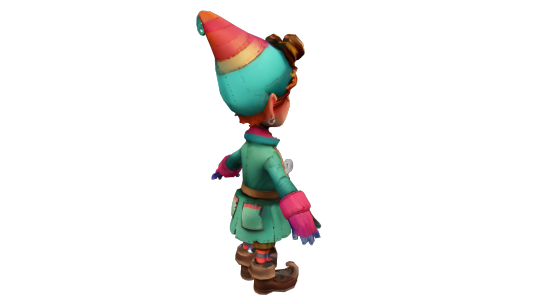


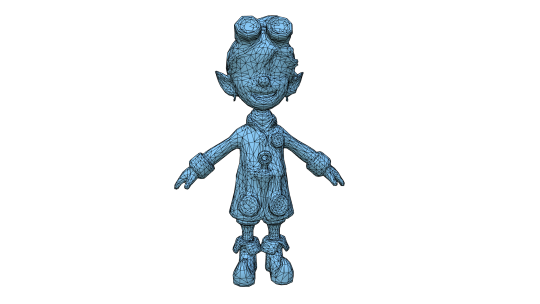
Kringle The Tinkerer 3D Model Lowpoly Elf
3D Model Specifications
8,969 Polygons
4,481 Vertices
Polygonal Quads/Tris Geometry
#Tinkerer#Elf#Inventor#Workshop#Magic#Enchanted#Toys#Gadgets#Christmas#Creativity#Innovation#Whimsy#Clockwork#Tools#Santa#Joy#Invention#design#3d model#blender 3d#3d art#3d artwork#3d animation
3 notes
·
View notes
Text
AGARTHA Aİ - DEVASA+ (4)
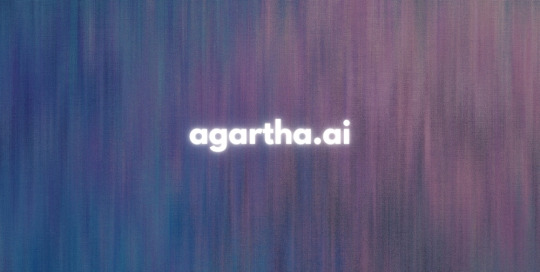
In an era where technology and creativity intertwine, AI design is revolutionizing the way we conceptualize and create across various industries. From the runway to retail, 3D fashion design is pushing boundaries, enabling designers to craft intricate garments with unparalleled precision. Likewise, 3D product design is transforming everything from gadgets to furniture, allowing for rapid prototyping and innovation. As we explore these exciting advancements, platforms like Agartha.ai are leading the charge in harnessing artificial intelligence to streamline the design process and inspire new ideas.
AI design
Artificial intelligence (AI) has revolutionized numerous industries, and the realm of design is no exception. By leveraging the power of machine learning and advanced algorithms, AI is transforming the way designers create, innovate, and deliver their products. AI-driven tools enable designers to harness vast amounts of data, allowing for more informed decision-making and streamlined workflows.
In the context of graphic design, AI can assist artists in generating ideas, creating unique visuals, and even automating repetitive tasks. For instance, programs powered by AI design can analyze trends and consumer preferences, producing designs that resonate with target audiences more effectively than traditional methods. This shift not only enhances creativity but also enables designers to focus on strategic thinking and ideation.
Moreover, AI is facilitating personalized design experiences. With the help of algorithms that analyze user behavior, products can be tailored to meet the specific needs and tastes of individuals. This level of customization fosters deeper connections between brands and consumers, ultimately driving customer satisfaction and loyalty in an increasingly competitive market.
3D fashion design
In recent years, 3D fashion design has revolutionized the way we create and visualize clothing. Using advanced software and tools, designers can create lifelike virtual garments that allow for innovative experimentation without the need for physical fabric. This trend has not only streamlined the design process but has also significantly reduced waste in the fashion industry.
Moreover, 3D fashion design enables designers to showcase their creations in a more interactive manner. By utilizing 3D modeling and rendering technologies, designers can present their collections in virtual environments, making it easier for clients and consumers to appreciate the nuances of each piece. This immersive experience also helps in gathering valuable feedback before producing the final product.
Furthermore, the integration of 3D fashion design with augmented reality (AR) and virtual reality (VR) technologies is bringing a fresh perspective to the industry. Consumers can virtually try on clothes from the comfort of their homes, thereby enhancing the shopping experience. As this field continues to evolve, it promises to bridge the gap between creativity and technology, paving the way for a sustainable and forward-thinking fashion future.
3D product design
3D product design has revolutionized the way we conceptualize and create products. With advanced software tools and technologies, designers can now create highly detailed and realistic prototypes that are not only visually appealing but also functional. This process allows for a quicker iteration of ideas, enabling designers to experiment with various styles and functionalities before arriving at the final design.
One of the significant advantages of 3D product design is the ability to visualize products in a virtual environment. Designers can see how their creations would look in real life, which is essential for understanding aesthetics and usability. Additionally, this technology enables manufacturers to identify potential issues in the design phase, reducing costs associated with prototype development and rework.
Moreover, the rise of 3D printing has further enhanced the significance of 3D product design. Designers can swiftly turn their digital models into tangible products, allowing for rapid prototyping and small-batch manufacturing. This agility not only speeds up the time-to-market for new products but also paves the way for more innovative designs that were previously impossible to execute.
Agartha.ai
Agartha.ai is a revolutionary platform that merges artificial intelligence with innovative design, creating a new avenue for designers and creators alike. With the rapid advancements in technology, Agartha.ai leverages AI to streamline various design processes, enabling users to produce unique and captivating designs with ease.
The platform provides tools that empower both emerging and established designers to explore the possibilities of AI design. By utilizing intelligent algorithms, Agartha.ai can assist in generating design options, ensuring that creativity is not hindered but enhanced. This results in a more efficient workflow and allows designers to focus on the conceptual aspects of their projects.
One of the standout features of Agartha.ai is its ability to adapt to different design disciplines, such as 3D fashion design and 3D product design. By supporting a broad spectrum of design fields, it positions itself as a versatile tool that meets the evolving needs of today's creative professionals. Whether it's crafting intricate fashion pieces or developing innovative product designs, Agartha.ai is at the forefront of the design revolution.
329 notes
·
View notes
Text
Touching is Good: A Retrospective
My trusty Nintendo 3DS, which has held out since I was gifted it for my 15th birthday, has turned one decade old with my 25th birthday this past November. Given new life with custom firmware and nds-bootstrap via TWiLightMenu, the 3DS is stellar for visiting any past handheld title or console title up to (and somewhat including) the N64. (Quick plug for the CFW/hacking community for the less popular PS Vita, too, which has accomplished some pretty crazy-cool stuff this last year.) I use my 3DS more often than I use my Nintendo Switch most weeks.
The Nintendo DS (minus the three) launched in late 2004. The second display and stylus support were novel tools for developers to experiment with, and the NDS is best remembered for its robust catalogue of RPGs and visual novels. Where it lacked in power, narrative-focused games flourished under its technical limitations.
That being said, while browsing the ROM archives on Vimm's Lair to pick up some titles, I was reminded of what an interesting era the mid-to-late 2000s were for games. While Sony and Microsoft were fighting over the "core gamer" demographic, who had outgrown Nintendo mascots, Nintendo led a series of wildly successful marketing campaigns for its hardware after the light failure of the Gamecube, where the Nintendo DS and then the Wii were targeted at...everyone else.

[Image source. Image description in alt text.]
If you look at ads for the DS and the Wii, you'll see that adults are featured much more prominently than children, especially women and seniors. (This did not go unnoticed, as I found this ancient relic of misogyny while looking for images for this post.) A Nintendo handheld was already an easy sell to parents with small children (though I think it's also notable that ads which do focus on children often prominently feature girls. Munchlax is pretty hot...), but Nintendo's angle for the DS and Wii was that their hardware wasn't just for children. The Wii was a way to get up off the couch and to play board games with grandma. The DS was a great gadget for a working woman to keep in her pocketbook.
This worked. The Wii and DS were two of the best-selling consoles of all time. In particular, the DS's marketing campaign only worked because it came out in the perfect window of time. PDA-phone hybrids had been around since the 90s, and the Blackberry had been kicking around for a few years, but the iPhone wouldn't be introduced until 2007, and the 4G LTE standard wouldn't be released until 2009. While the Blackberry was popular with businesspeople and the PDA was out of style, smartphones were luxury toys for several years; they wouldn't become near-ubiquious until the mid-2010s. I didn't get my own smartphone until probably around the same time I got my 3DS, a full handheld generation later.
Browsing the software library for the Nintendo DS and DSi with that in mind is really interesting. Many titles released for the platform serve the same purposes that would be fulfilled by simple smartphone apps less than a decade later: planners and diaries, fitness trackers, calculators, language learning and SAT prep software, even a guide to the then-most-recent version of the driver's test in the UK. These proliferated with the release of the DSi's virtual store, but they existed even with the base model. You could go to a brick-and-mortar store and buy them on physical cartridges. (You might be wondering, "Why would you bother carrying those around over just buying a Blackberry?" You can't underestimate how expensive the service bills for a smartphone were before companies realized they were the most powerful spyware tool in history.)
There was never a time where every single businesswoman in New York carried a DS Lite, but adults did buy and use them, and a not insignificant portion of the DS's software library is aimed at a casual adult audience. Another niche covered mostly by smartphone games these days—games designed to be picked up and played in short sessions on-the-go, in places like waiting rooms and subway commutes.
Nintendo made crazy bank in the seventh console generation. Publications of the time talked about a console war between Sony, Microsoft, and Nintendo, but the real battle was between the PS3 and the Xbox 360 over the gamer demographic. Nintendo was producing hardware for a niche who would quietly disappear once smartphone sales began ballooning by hundreds of millions per year over the course of the early 2010s.
After the failure of the Wii U, Nintendo's marketing strategy pivoted again, though I doubt they'll ever completely abandon their family-friendly image. Currently beat out only by the PS2 and the DS, the Nintendo Switch may very well climb to a status as the best-selling console of all time before the end of its lifespan, but the "gamer" demographic is much bigger than it was two decades ago at the dawn of the DS. As more and more devices become consolidated into the Swiss army knife the smartphone has become, consoles can only carve out a role as dedicated gaming machines.
I'm not sure we'll ever see anything like the Nintendo DS or the Wii again. I think they're worth looking back on for their uniqueness in that way as much as they are for the more celebrated parts of their libraries.
#mine#this is the first in a series of posts i have in mind on this general subject. my next one will be more entertaining i think.
32 notes
·
View notes
Text
As for myself, I never backpacked through Asia, and of course I've never done a medical residency, either.
I was a Second Life content creator around 2008-2012, which is itself pretty rare.
In Second Life, especially in those years, there wasn't a clean division between "playing the game" and "making the world," and there wasn't a clean division between "content creators" (including businesses) and "players." And the whole thing was funded mostly by privately leased plots of virtual land as server space.
Back in 2007, under liberal technological optimism, there was still this sense that everyone would own and learn to properly operate their own PC, which is to say a 'real' computer like a desktop or laptop, rather than an 'appliance' computer like a smartphone or tablet. Though the platform was privately held, Second Life embodied this thinking.
And so it possessed this immense feeling of power and control. You could click on a rock and drag it around. If you had good device operator skills, you could search out and purchase a supply of copiable rocks and assemble a little volcano lair and exotic beach house on a sandy beach as your home.
At first, almost all items were assembled within the game, and only textures made externally. Gradually this shifted to the use of external 3D modelling tools such as Blender, but for a time, this meant that much of the act of product creation was in the world, as in people would be logged in making the product in front of you and you could chat with them while they did so.
And of course, this world attracted people that for some reason were willing to lean to this kind of detached embodiment. Some were queer, or trans, or neurodivergent. Some were of ill health, or crippled. Others were in some sense very 'in their own heads,' or just well-adapted to simulated or virtual-reality environments. (Does that sound like Tumblr? It's probably not a coincidence.)
It was a world with a very different axis. Your appearance was a function of your aesthetic taste, your device operator skill to search out and assemble and compose an outfit, and only a modest amount of money. Someone with a very high-grade appearance would also be someone that's decently good with computers. For those with programming aptitude, their gadgets or products around them (or for sale at their store), would illustrate it.
And for creators, there was overlap between the ability to 3D model a car, and the ability to 3D model clothing. A creator could be a maker of tanks and also have their own fashion line - or even unique personal outfits. (Even hobbyists with more modest abilities would customize and kitbash - and creators would sometimes set things up specifically so that they could do so.)
There was a sense of whimsy. Cultural norms, too, though of course all massively-multiplayer systems will develop their own etiquette. (Gender could be fluid - the same player might have a stock of both male and female bodies and outfits depending on the context in which they were to be used and the message they wanted to send.)
The problem with Second Life is that you cannot live there.
Yes, it's a low-dimensionality construct like all video games. It lacks scent, and temperature, and touch. Its avatars have far fewer bones than a human body does, and of course, no organs. Its low dimensionality is why it can be changed and molded like clay, into fantastical forms that could never exist in real life.
But more importantly, children live in real life. And if you're injured or sick and can't get up, someone needs to come retrieve you in real life.
The platform turned out to be relatively useless for major corporations and universities. It didn't transform the economy and add trillions to the GDP, and virtual land didn't become the wave of the future - although digital currency did, for a while.
Instead, this failed vision of the future created a flourishing of creativity and human connection, and as time passes, it's becoming clear that the reason is because it was so earnest and very much the thing that it was. (There is value in things which are not perfect, but which are very much themselves, and are good at being the thing that they are.)
On the financial side, it was still operating at a profit when I checked the numbers several years ago. As part of its portfolio, the company seems to have leveraged digital currency operations based on their built-up competency in that sector - as in payment processing, not cryptocurrency.
And what do people write about Second Life now, in 2023? Well, they write about the fashion. About the continuing culture of small-time creators, allowed to work within the framework that was created for them all those years ago. About the platform remaining a steady source of background income for people with jobs in the games industry, notorious for its high turnover.
29 notes
·
View notes
Text
3D Product Animation Services in the USA: Captivating Audiences with Visual Storytelling
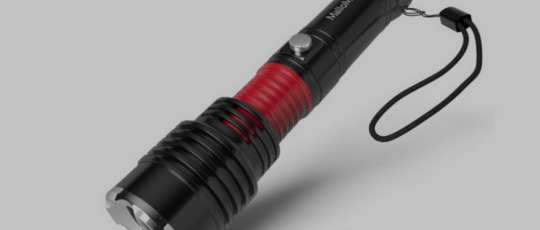
What is 3D Product Animation?
3D product animation involves creating animated, three-dimensional visual representations of a product. Unlike static images, 3D animations allow viewers to see the product from multiple angles, explore its features, and even witness its functionality in action. This immersive approach not only enhances customer understanding but also helps in conveying the brand’s message more effectively.
The Importance of 3D Product Animation
Enhanced Engagement: In a world where attention spans are dwindling, captivating content is crucial. 3D product animations engage viewers by combining visual appeal with informative content. When consumers can see a product in action, it helps create a connection that static images simply cannot achieve.
Complex Demonstrations Made Easy: Certain products, especially those with intricate functionalities, can be difficult to explain through text or simple images. 3D animations simplify this process by visually demonstrating how a product works. For example, a tech gadget can be animated to show its features, usability, and integration into everyday life.
Versatile Marketing Tool: 3D product animations can be used across various platforms, including websites, social media, email campaigns, and presentations. This versatility allows brands to reach their audience through multiple channels, reinforcing their message and enhancing brand recognition.
Increased Sales Conversion: According to studies, products that feature videos or animations have higher conversion rates. By showcasing a product’s unique features and benefits, 3D animations can significantly influence a consumer’s purchasing decision.
Competitive Advantage: In a crowded marketplace, standing out is essential. 3D product animations provide brands with a unique way to showcase their offerings, differentiating them from competitors who rely solely on traditional marketing methods.
The Process of Creating 3D Product Animations
Creating a compelling 3D product animation involves a multi-step process that requires a blend of creativity, technical skills, and collaboration between the client and the animation team. Here’s a breakdown of the typical workflow:
1. Concept Development
Before diving into the animation process, it’s essential to establish a clear concept. This stage involves understanding the product, its target audience, and the message that needs to be conveyed. Brainstorming sessions between the client and the animation team can help identify key selling points and narrative elements.
2. Storyboarding
Once the concept is defined, the next step is to create a storyboard. This visual representation outlines the sequence of events in the animation, including camera angles, transitions, and key moments. Storyboarding helps ensure that everyone involved has a clear understanding of the project’s direction.
3. 3D Modeling
This phase involves creating a digital 3D model of the product. Using specialized software, animators craft a detailed representation that captures the product’s design, colors, textures, and features. This model serves as the foundation for the animation.
4. Animation
With the 3D model complete, animators bring the product to life. This step includes adding movements, effects, and transitions that demonstrate the product’s functionality. For example, a product could be animated to show how it opens, operates, or interacts with other objects.
5. Rendering
After the animation is complete, the final step is rendering. This process converts the animated model into a video format, ensuring that all visual and audio elements are perfectly synchronized. Rendering can be resource-intensive and may take time, depending on the complexity of the animation.
6. Feedback and Revisions
Client collaboration is crucial throughout the animation process. After the initial render, feedback is solicited, and revisions may be made to ensure the final product aligns with the client’s vision.
Applications of 3D Product Animation
3D product animation services find applications across various industries, including:
Consumer Electronics: Tech companies use 3D animations to demonstrate the features of new gadgets, making it easier for consumers to understand their benefits.
Healthcare: Pharmaceutical companies can animate complex medical devices, helping healthcare professionals and patients grasp their functionalities.
Automotive: Car manufacturers create 3D animations to showcase vehicle features, interiors, and performance, enticing potential buyers.
Fashion: Clothing brands can use 3D animations to highlight the fabric, fit, and design of their apparel, creating virtual fashion shows.
Manufacturing: Industrial companies often use 3D animations to visualize machinery and equipment, making it easier to explain complex processes.
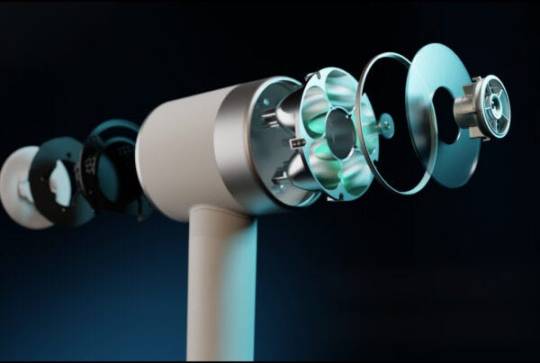
FAQs About 3D Product Animation Services in the USA
1. What are the benefits of using 3D product animation?
3D product animation enhances engagement, simplifies complex demonstrations, increases sales conversion rates, and provides a competitive edge in marketing.
2. How long does it take to create a 3D product animation?
The timeline varies based on the project’s complexity, but typically it takes a few weeks to complete the entire process from concept development to final rendering.
3. What is the cost of 3D product animation services?
Costs depend on various factors, including the length of the animation, complexity, and the animation studio’s expertise. It’s advisable to request quotes from multiple providers to find a suitable option.
4. Can I see examples of previous work before hiring an animation service?
Yes, reputable animation studios usually have portfolios showcasing their previous work. Reviewing these can give you a sense of their style and capabilities.
5. Is client collaboration involved during the animation process?

Conclusion
As the demand for engaging and informative marketing content continues to grow, 3D product animation services offer a powerful solution for brands in the USA. By leveraging this innovative technology, businesses can elevate their marketing strategies, enhance customer understanding, and ultimately drive sales.
If you’re looking to make an impact with your product presentations, consider partnering with 3dmodellingservices for professional and high-quality 3D animations tailored to your needs. Transform the way you showcase your products and stand out in today’s competitive landscape!
2 notes
·
View notes
Text
System Shock 2 in Unreal Engine 5
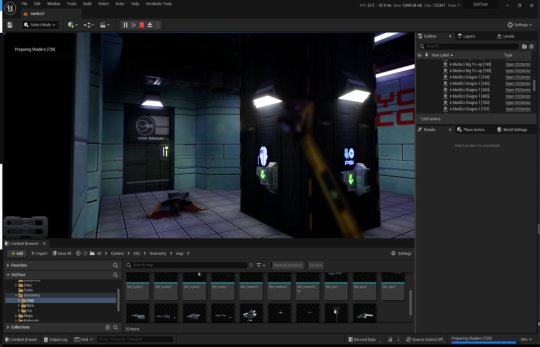
Tools, tools, tools
Back when I worked in the games industry, I was a tools guy by trade. It was a bit of a mix between developing APIs and toolkits for other developers, designing database frontends and automated scripts to visualise memory usage in a game's world, or reverse engineering obscure file formats to create time-saving gadgets for art creation.
I still tend to do a lot of that now in my spare time to relax and unwind, whether it's figuring out the binary data and protocols that makes up the art and assets from my favourite games, or recreating systems and solutions for the satisfaction of figuring it all out.
A Shock to the System
A while back I spent a week or so writing importer tools, logic systems and some basic functionality to recreate System Shock 2 in Unreal Engine 5. It got to the stage where importing the data from the game was a one-click process - I clicked import and could literally run around the game in UE5 within seconds, story-missions and ship systems all working.
Most of Dark engine's logic is supported but I haven't had the time to implement AI or enemies yet. Quite a bit of 3D art is still a bit sketchy, too. The craziest thing to me is that there are no light entities or baked lightmaps placed in the levels. All the illumination you can feast your eyes on is Lumen's indirect lighting from the emissive textures I'd dropped into the game. It has been a fun little exercise in getting me back into Unreal Engine development and I've learnt a lot of stuff as usual.
Here is a video of me playing all the way up to the ops deck (and then getting lost before I decided to cut the video short - it's actually possible to all the way through the game now). Lots of spoilers in this video, obviously, for those that haven't played the game.
youtube
What it is
At it's core, it's just a recreation of the various logic-subsystems in System Shock 2 and an assortment of art that has been crudely bashed into Unreal Engine 5. Pretty much all the textures, materials, meshes and maps are converted over and most of the work remaining is just tying them together with bits of C++ string. I hope you also appreciate that I sprinkled on some motion-blur and depth of field to enhance the gameplay a little. Just kidding - I just didn't get around to turning that off in the prefab Unreal Engine template I regularly use.
Tool-wise, it's a mishmash of different things working together:
There's an asset converter that organises the art into an Unreal-Engine-compatible pipeline. It's a mix of Python scripting, mind numbingly dull NodeJS and 3dsmaxscript that juggles data. It recreates all the animated (and inanimate) textures as Unreal materials, meshifies and models the map of the ship, and processes the objects and items into file formats that can be read by the engine.
A DB to Unreal converter takes in DarkDBs and spits out JSON that Unreal Engine and my other tools can understand and then brings it into the Engine. This is the secret sauce that takes all the levels and logic from the original game and recreates it in the Unreal-Dark-hybrid-of-an-engine. It places the logical boundaries for rooms and traps, lays down all the objects (and sets their properties) and keys in those parameters to materialise the missions and set up the story gameplay.
Another tool also weeds through the JSON thats been spat out previously and weaves it into complex databases in Unreal Engine. This arranges all the audio logs, mission texts and more into organised collections that can be referenced and relayed through the UI.
The last part is the Unreal Engine integration. This is the actual recreation of much of the Dark Engine in UE, ranging all the way from the PDA that powers the player's journey through the game, to the traps, buttons and systems that bring the Von Braun to life. It has save-game systems to store the state of objects, inventories and all your stats, levels and progress. This is all C++ and is built in a (hopefully) modular way that I can build on easily should the project progress.
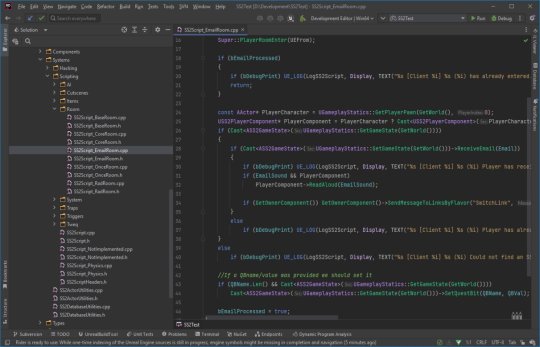
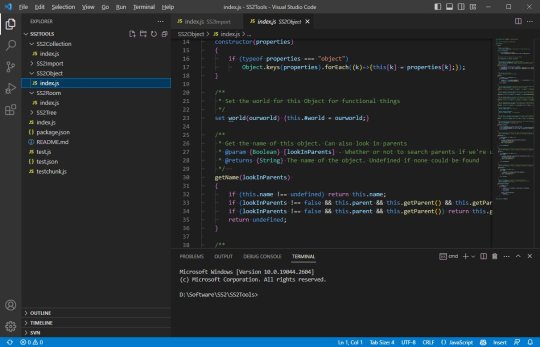
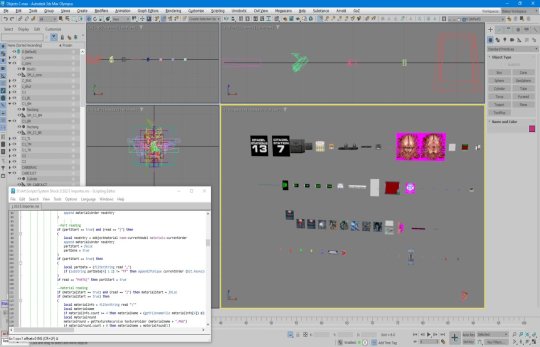
Where it's at
As I mentioned, the levels themselves are a one-click import process. Most of Dark engine's logic, quirks and all, is implemented now (level persistence and transitions, links, traps, triggers, questvars, stats and levelling, inventory, signals/responses, PDA, hacking, etc.) but I still haven't got around to any kid of AI yet. I haven't bought much in the way of animation in from the original game yet, either, as I need to work out the best way to do it. I need to pull together the separate systems and fix little bugs here and there and iron it out with a little testing at some point.
Lighting-wise, this is all just Lumen and emissive textures. I don't think it'll ever not impress me how big of a step forward this is in terms of realistic lighting. No baking of lightmaps, no manually placing lighting. It's all just emissive materials, global/indirect illumination and bounce lighting. It gets a little overly dark here and there (a mixture of emissive textures not quite capturing the original baked lighting, and a limitation in Lumen right now for cached surfaces on complex meshes, aka the level) so could probably benefit with a manual pass at some point, but 'ain't nobody got time for that for a spare-time project.
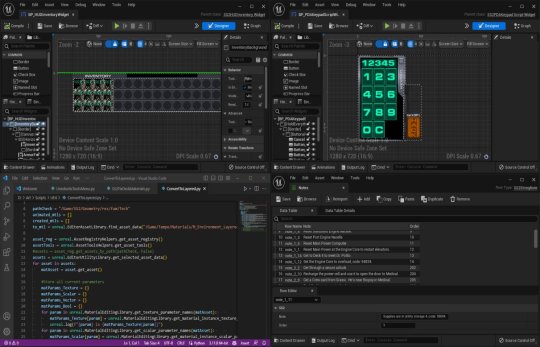
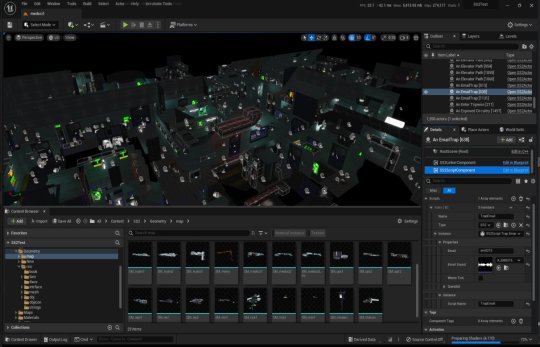
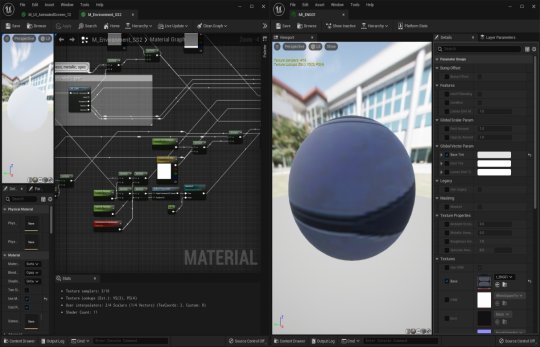

The unreal editor showcasing some of the systems and levels.
Where it's going
I kind of need to figure out exactly what I'm doing with this project and where to stop. My initial goal was just to have an explorable version of the Von Braun in Unreal Engine 5 to sharpen my game dev skills and stop them from going rusty, but it's gotten a bit further than that now. I'm also thinking of doing something much more in-depth video/blog-wise in some way - let me know in the comments if that's something you'd be interested in and what kind of stuff you'd want to see/hear about.
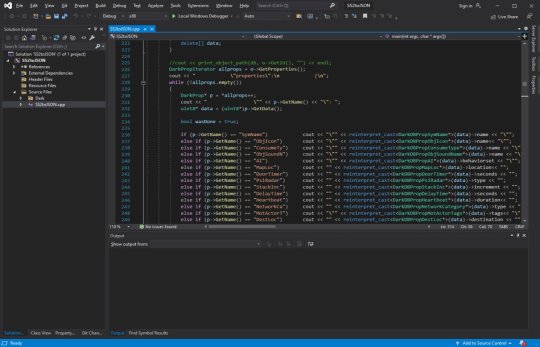
The DB to JSON tool that churns out System Shock 2 game data as readable info
Anyway - I began to expand out with the project and recreate assets and art to integrate into Unreal Engine 5. I'll add more as I get more written up.
#game development#development#programming#video game art#3ds max#retro gaming#unreal engine#ue5#indiedev#unreal engine 5#unreal editor#system shock 2#system shock#dark engine#remake#conversion#visual code#c++#json#javascript#nodejs#tools#game tools#Youtube
1 note
·
View note
Text
Compare Best Mobile Phones in BD – 2025 Expert Picks
In 2025, the mobile phone in Bangladesh has evolved from being a luxury to a daily essential. With an increasing number of smartphone users, from students and professionals to gamers and content creators, buyers now demand power, performance, and value in one package. The rise of flagship models like the iPhone 16 Pro Max and budget legends like the Samsung M21 shows how diverse the market has become. This guide is tailored for anyone in Bangladesh looking to buy the best mobile phones in Bangladesh, whether for gaming, camera, or all-around daily use.

The Mobile Phone Market of Bangladesh
The evolution of the mobile phone has been very rapid in Bangladesh. Users' preferences have changed from basic feature phones of the early 2000s, to current 5G capable smartphones. They now prioritize performance, camera quality and display. Smartphones have become essential tools due to the rise in digital payments, education online, and content production.
Demand is driven by the following in 2025:
Flagship innovation (e.g., iPhone 16 Pro Max, Samsung Galaxy S24+)
Domination of the mid-range budget
Features geared towards youth, such as TikTok optimization or gaming refresh rates
The Bangladeshi consumer is now more educated and prone to comparisons than at any other time in history.
The Latest Mobile Phones in Bangladesh by 2025
These mobile phones are available in a variety of specs and price ranges. Popular brands include
Apple: iPhone 16 Pro Max, iPhone 15 Pro Max, iPhone 15
Samsung: Galaxy S24+, M21, A24
Xiaomi: Redmi Note 13 Pro, Poco X6
itel and Infinix : budget models with huge batteries
Realme & Symphony : mid-range cameras with powerful camera setups
The prices range between under 10,000 BDT and over 200,000BDT. This ensures that there is something for everyone.
The Best Mobile Phones In Bangladesh: Reviews By Category
The Flagship Mobile Phones of Bangladesh
1. iPhone 16 Pro Max
Chipset: A18 Pro
camera: quad-lens night vision
Display: Super Retina XDR OLED
Why the best phone camera in Bangladesh is ?
Cons : Limited fast charging, expensive and costly
2. Samsung Galaxy S24+
Display: 6.7" AMOLED, 120Hz
Performance: Snapdragon 8 Gen 3
Android Flexibility + Pro Features: Why it Shines
Cons : Expensive for casual users

The Best Phones in the Mid-Range
1. iPhone 15 / iPhone 15 Pro Max
The perfect choice for users who want to experience Apple's ecosystem
The smoothness of iOS and its battery is superior to Android competitors
2. Samsung M21
Battery (6000mAh) is known for its decent performance.
Ideal for YouTube, Facebook, and students
Cheap Mobile Phones In Bangladesh
1. itel Vision 5 Plus
Under 12K BDT, massive battery with simple interface.
2. Symphony Helio 50
Apps for calls and study are great.
Price: Around 10,000 BDT
What to consider when choosing the best mobile phone in Bangladesh
Consider these factors before you purchase:
Performance : Search for chipsets that are recent and have at least 6GB of RAM.
Battery : now 5000mAh as the base; charging at 25W+ helps
camera: if you are a creator then opt for stabilization and 4K support.
Display : An AMOLED display with a minimum 90Hz refresh rate is the ideal.
Click here to find a brand-service center near you.
Mobile Phone Price in Bangladesh Listings online
Where can I buy authentic mobile phones in Bangladesh?
Online Platforms:
Pickaboo
Daraz
Robishop
G&G (Gadget & Gear)
Offline:
Stores of official brands (Apple, Samsung, Xiaomi).
Trusted retail shops in Bashundhara City, Jamuna Future Park
Tips:
Check for the "Official Warranty" Tag
Shops without Brand Authorization
Request a VAT Slip and Seal Pack

Compare Smartphones - What Phone Is the Best Value for Money?
Compare three different models from the same category:Use CasePhoneWhy it WinsYou can also use a cameraiPhone 16 Pro MaxThe Cinematic Mode of ProRAW allows 3D capture.GamerSamsung Galaxy S24+Cooling system 120Hz with Game Boost ModeAll-rounderSamsung M21Battery, social media, YouTube smoothness
The Best Smartphones for Users Type
Students
Samsung M21
Symphony Z60
Focus: Battery, budget, decent camera
Gamers
Samsung Galaxy S24+
Xiaomi Poco X6
High-refresh rate and responsive interface
Professionals
iPhone 15 / 16 Pro Max
Galaxy S24+
Multitasking, secure data, 5G, ecosystem support
Casual Users
itel S23
Realme C55
Long battery life, excellent display and budget-friendly.
How to get the best mobile phone deals in Bangladesh
Shop for Eid, Victory Day or New Year's offers
Download vouchers for Daraz and Pickaboo
Browse bundles that include screen protectors and earphones
EMI Offers Available from Major Brands (0% for up to 12 Months)

FAQs
1. Which is the best mobile phone in Bangladesh under 20,000 BDT? Samsung M21, Symphony Helio 50, and Realme Narzo 50A offer great value under this price.
2. How to find genuine mobile phones with official warranty in Bangladesh? Buy from verified stores like Daraz Mall, Pickaboo, and authorized brand outlets. Look for sealed boxes with warranty cards.
3. What are the latest smartphones launched in Bangladesh in 2025? iPhone 16 Pro Max, Samsung Galaxy S24+, Xiaomi 14C, itel P60 are among the top releases.
4. Which mobile phone has the best camera in Bangladesh? iPhone 16 Pro Max takes the lead with advanced cinematic video and ProRAW stills.
5. Where to get the best mobile phone deals in Bangladesh? Check Daraz’s flash sales, Pickaboo combo offers, and Eid/New Year campaigns for discounts.

Final Thoughts
Bangladesh’s smartphone market is richer than ever. Whether you’re looking for the best smartphone in Bangladesh or a budget all-rounder, options exist across every category. From the elite iPhone 16 Pro Max to the reliable Samsung M21, there's a perfect match for every user.
We offer the latest reviews, price updates, and exclusive deals. Stay tuned for the best mobile phone offers in Bangladesh. Explore our detailed guides and make an informed choice today!
#latest phone reviews#phone news#phone specifications#phone comparisons#phone reviews#tech info#tech news#tech informations#Best Mobile Phones
1 note
·
View note
Text
3D/4D Portable Bladder Scanner | WiFi Ultrasound Scanner | SONOSIF

Shop top-quality Portable Bladder Scanner at Sonosif! Find portable, 3D or 4D precise devices for accurate diagnostics. Perfect for clinics & hospitals. Buy now!
Revolutionizing Urology: The Power of a Portable Bladder Scanner
Exploring the Benefits of a Portable Bladder Scanner
In the fast-paced world of modern medicine, the portable bladder scanner stands out as a revolutionary tool for healthcare professionals. With its compact design and non-invasive technology, it simplifies the assessment of urinary retention and other bladder-related conditions. For clinicians in both hospital and outpatient settings, the Portable bladder scanner offers an efficient, patient-friendly solution that enhances diagnostic accuracy and speeds up treatment planning.
Moreover, advancements in medical imaging have led to the development of the sPortable bladder scanner, a highly mobile device that doesn’t compromise on precision. It's a perfect choice for remote clinics, emergency departments, and even home care services where access to traditional imaging tools is limited.
Why the Portable Bladder Scanner is a Game-Changer
Bladder issues are incredibly common, especially among elderly patients, post-surgical cases, or individuals with neurological disorders. The portable bladder scanner eliminates the discomfort and infection risk associated with catheterization, providing an easy way to estimate bladder volume in seconds.
This tool is not just a luxury—it's a necessity in modern medical care. In the middle of a busy emergency room or in the privacy of a patient’s home, it gives immediate results, which helps clinicians make faster decisions. With just the push of a button, it offers real-time imaging and accurate bladder volume measurements, eliminating guesswork and reducing complications.
Key Advantages of the sPortable Bladder Scanner
Mobility and Convenience: Lightweight, battery-operated models allow for use in various clinical environments.
Non-Invasive Assessment: Reduces infection risks and patient discomfort compared to traditional catheterization.
Cost-Effective Solution: Minimizes unnecessary procedures, saving both time and resources.
Medical teams across the globe are integrating the sPortable bladder scanner into daily workflows, improving both operational efficiency and patient satisfaction. When every second counts, having an advanced, handheld device at your side makes all the difference.
Transforming Care Through Portability
Imagine a home care nurse being able to assess urinary retention without transferring the patient to a hospital. That’s the kind of flexibility and autonomy the portable bladder scanner delivers. Its application stretches across disciplines—from urology and geriatrics to rehabilitation and post-operative care.
With an intuitive user interface and minimal training required, it empowers healthcare providers to deliver top-tier diagnostics wherever they are. Whether it's used in rural clinics or urban hospitals, it’s revolutionizing how clinicians interact with their patients.
Final Thoughts: A Modern Medical Essential
The portable bladder scanner is no longer an optional gadget—it’s becoming an essential part of medical kits worldwide. From improving diagnostic speed to enhancing patient experience, it supports a shift toward smarter, more compassionate care.
As medical technology continues to evolve, the sPortable bladder scanner represents a clear step forward in innovation, offering unparalleled accuracy in a device that fits in the palm of your hand.
Shop Now: - https://sonosif.com/product-category/ultrasound-scanners/bladder-ultrasound-scanners/
0 notes
Text
Explore Innovation with the Best 3D Printer in India Through Online 3D Printing Services
The world of manufacturing and design is evolving rapidly, and one technology leading this change is 3D printing. From creating custom prototypes to building unique consumer products, 3D printing has transformed the way we approach production and innovation. In India, the demand for this technology has surged, thanks to the increasing availability of Online 3D Printing India services and access to the best 3D printer in India for enthusiasts, professionals, and businesses alike.
Why 3D Printing Is Gaining Popularity in India
India has embraced digital transformation at a phenomenal pace. As startups, educational institutions, and even traditional manufacturing units look for more efficient solutions, 3D printing stands out as a game-changer. It reduces development costs, speeds up product timelines, and enables customization on a level never before possible.

The introduction of online 3D printing India services means that anyone can upload a 3D model and have it printed and delivered within days—without ever investing in their own 3D printer. This democratizes innovation, empowering entrepreneurs, students, and creators across the country.
Benefits of Using Online 3D Printing India Services
One of the main reasons people are switching to online 3D printing India services is convenience. You no longer need to own a printer or worry about materials, calibration, or post-processing. Simply design your object using CAD software, upload it to a reliable 3D printing website, and let the professionals take care of the rest.
Additionally, these services offer:
Wide material choices: From PLA and ABS to more advanced materials like resin, nylon, and even metal composites. Professional quality: High-end printers ensure precise and durable results. Cost efficiency: For low-volume or one-off parts, it's cheaper than owning a printer. Many companies also provide design assistance, which is particularly helpful for beginners. Whether you're prototyping a new gadget or designing jewelry, you can get expert guidance every step of the way.
Choosing the Best 3D Printer in India for Personal or Business Use
While online 3D printing India platforms are ideal for occasional users, investing in the best 3D printer in India can be a smart decision if you're a frequent user. The right printer allows for creative freedom, rapid prototyping, and on-demand production from the comfort of your home or office.
Here are a few factors to consider when choosing the best printer:
Print quality: Look for high resolution and layer accuracy. Build volume: Choose based on the size of objects you typically print. Material compatibility: Some printers work only with specific filaments, while others are more versatile. Ease of use: Features like touchscreen controls, Wi-Fi connectivity, and automatic bed leveling make a huge difference. Support and service: Choose a brand that offers strong after-sales support in India. Some of the most trusted brands offering the best 3D printer in India include Creality, Anycubic, Ultimaker, and Prusa. These brands are known for quality, durability, and ease of use, making them suitable for both beginners and professionals.
Popular Use Cases for 3D Printing in India
The scope of 3D printing in India is vast. Different industries are leveraging this technology for various applications:
Education: Engineering and design colleges use 3D printers to teach students real-world skills and bring their designs to life. Healthcare: Custom prosthetics, dental models, and surgical tools are increasingly being made using 3D printing. Automotive and Aerospace: These sectors use 3D printing to prototype parts, test functionality, and even produce end-use components. Art and Jewelry: Artists and jewelers are using 3D printing to create intricate designs with unmatched precision. Architecture: Scaled models of buildings and landscapes are easily produced with detailed accuracy. By tapping into online 3D printing India services or owning the best 3D printer in India, these industries are driving innovation and cost-effectiveness.
How to Get Started with 3D Printing in India
If you're curious about this technology, getting started is easier than ever. First, learn some basic CAD design skills—there are free tools like Tinkercad and Fusion 360 that make it accessible. Then decide whether to try an online 3D printing India service or purchase your own printer.
Start small by printing simple objects. As your confidence and skill grow, you can move on to more complex designs. Join online communities, watch tutorials, and attend workshops to accelerate your learning curve.
The Future of 3D Printing in India
As the technology matures, we can expect online 3D printing India platforms to become more affordable, faster, and accessible. The integration of AI and automation will enhance print quality, reduce errors, and streamline the design-to-product journey. Meanwhile, advances in materials will expand the scope of 3D printing from plastic and resin to biodegradable, sustainable options, and even food-grade materials.
India’s growing maker community, combined with government support for innovation and manufacturing, makes the future of 3D printing exceptionally promising.
Final Thoughts
Whether you're a hobbyist, a small business owner, or an industrial designer, 3D printing opens up limitless possibilities. With the convenience of online 3D printing India services and access to the best 3D printer in India, there's never been a better time to turn your ideas into reality. Embrace this exciting technology today and be a part of India's digital manufacturing revolution.
0 notes
Text
Discover Smarter Design with SolidWorks and Tridax Solutions
In the world of product design, speed, precision, and adaptability are critical. Whether you're developing complex machinery or sleek consumer gadgets, the tools you use can define the success of your project. That’s where SolidWorks comes in — a trusted 3D design software that brings ideas to life with accuracy, efficiency, and creativity.
And with Tridax Solutions as your SolidWorks partner, you don’t just get software — you get personalized support, expert guidance, and a reliable foundation for success.

What Makes SolidWorks the Industry Standard?
SolidWorks is a powerful, feature-rich CAD software widely recognized for its intuitive user interface and robust capabilities. It allows engineers and designers to build detailed 3D models, simulate real-world conditions, and streamline the entire design process from concept to production.
Whether you’re working on automotive components, home appliances, industrial tools, or custom furniture — SolidWorks adapts to your vision and your workflow.
Key Benefits of SolidWorks
Adaptable for Any Industry
From electronics and engineering to marine and manufacturing, SolidWorks supports a broad spectrum of industries. Its ability to manage various design requirements makes it ideal for teams handling multiple product types.
Parametric Design Made Simple
One of SolidWorks’ standout features is its parametric modeling. When you modify one part of a design, the related elements automatically update. This reduces human error, improves efficiency, and ensures design consistency throughout the project.
Fast and Flexible Editing
Need to update a concept or accommodate client feedback? With SolidWorks, design revisions are fast and easy. You don’t have to start over — just make changes and continue refining your model in real-time.
Test Your Design Before Building
SolidWorks includes simulation tools that mimic real-world forces like pressure, heat, and load. This allows you to analyze how your product performs under stress — and fix issues early, saving time and resources.
Extensive Built-In Libraries
SolidWorks comes with a comprehensive library of standard parts, templates, and materials. Instead of building every component from scratch, you can use these ready-made resources to accelerate your design process.
User-Friendly for All Skill Levels
Even if you're new to CAD, SolidWorks is easy to learn. The software features a clean interface and logical toolsets, plus there's a wide range of tutorials, training modules, and community support available.
A Global Standard
SolidWorks is used by thousands of companies, startups, universities, and professionals across the globe. Its reputation for reliability and innovation makes it one of the most trusted names in 3D design.
Why Choose Tridax Solutions?
When it comes to investing in a powerful design tool like SolidWorks, choosing the right provider is essential. Tridax Solutions offers more than just product licensing — we deliver a complete design enablement experience.
Expert Product Advice
Our team understands 3D design inside and out. We guide you in selecting the version of SolidWorks that matches your specific business needs and technical goals.
Customer-Focused Service
We believe in building long-term partnerships. That’s why customer satisfaction is at the core of everything we do. From onboarding to after-sales support, we're here to assist every step of the way.
Tailored Packages
No two businesses are alike. We offer customized SolidWorks bundles that align with your industry, team size, and budget — ensuring you get the best return on investment.
Comprehensive Training & Support
Our services include hands-on training to help your team maximize productivity with SolidWorks. You also get ongoing technical support so you're never stuck or slowed down by challenges.
Take the Next Step in Design Innovation
If you're looking to improve design efficiency, reduce errors, and create better products faster, now is the time to invest in SolidWorks with Tridax Solutions.
From initial sketches to detailed prototypes, SolidWorks supports your creative process every step of the way. It empowers you to design with confidence, make data-driven decisions, and deliver professional-grade results — all while staying agile and cost-effective.
Ready to Transform the Way You Design?
Let’s help you build smarter, innovate faster, and achieve more with SolidWorks.
🔗 Learn more or make a purchase today: https://www.tridaxsolutions.com/product/solidworks-3d-parametric-design-software/
SolidWorks and Tridax Solutions — together, we turn ideas into industry-ready solutions.
0 notes
Text
How Virtual Reality is Revolutionizing Product Design
In today’s rapidly evolving tech landscape, Virtual Reality (VR) is not just a futuristic concept—it’s a game-changer for industries across the board, especially product design. From concept to creation, VR tools are empowering designers to visualize, modify, and perfect their ideas like never before.
Gone are the days of static sketches and basic prototypes. With virtual reality 3D modeling, designers can step into their creations, inspect details from every angle, and identify potential design flaws in real-time. This immersive experience accelerates the development process, improves accuracy, and reduces production costs.
VR also bridges the gap between clients and designers. Instead of trying to interpret a 2D sketch, clients can now experience the product before it's made, leading to faster approvals and better collaboration. Whether it's automotive, furniture, or tech gadgets, VR enables stakeholders to make informed decisions at every stage.
Moreover, combining VR with 3D product visualisation enhances product marketing, giving customers an interactive, engaging preview. This not only improves customer experience but also boosts conversion rates in e-commerce settings.
As technology continues to evolve, virtual reality 3D modeling will undoubtedly become the standard in modern product design—enabling smarter, faster, and more creative solutions.
About Us: At Baked Moon Studios, we specialize in AR/VR-enabled 3D modeling solutions that help businesses visualize, market, and innovate their products with precision. Visit us to explore how we can bring your vision to life.
0 notes
Text
What Is Product Design and How Do You Start a Career in It?

Product design is the process of creating new products that are useful and look good. These products can be physical like furniture or tools. They can also be digital like apps or gadgets. The goal is to solve problems and improve the user’s experience.
Product designers think about how a product works and how it feels. They work on the shape, color, materials, and even how the product is used every day. They test many ideas before making the final version.
What Do Product Designers Do?
A product designer works from idea to final model. They talk to people, sketch concepts, and make prototypes. They check if the product feels right and does the job well. They use tools like CAD software to turn sketches into 3D models.
They often work with:
Engineers
Marketers
Manufacturers
UX designers (for digital products)
The job needs both creative thinking and practical skills. A good product looks smart and works smoothly.
What Do You Learn in a Diploma in Product Design?
A diploma in product design is a course that teaches the basics of designing useful products. It covers both creative and technical parts of design. Students learn how to sketch, build models, and use design software.
Topics usually include:
Drawing and sketching
Material study
3D modeling and CAD tools
Prototype making
Human-centered design
Market research
Students also work on design projects and get feedback. This helps build a portfolio. Some colleges also include internships or industry projects in the course.
Skills Needed in Product Design
Product designers need a mix of creative and thinking skills. They must observe problems and come up with smart solutions.
Important skills include:
Drawing and idea sketching
Thinking from the user’s point of view
Knowing materials and how things are made
Communication and teamwork
Basic knowledge of design software
You also need patience because design involves many changes. A product is tested many times before it is finished.
Career Options After Diploma in Product Design
A diploma in product design can lead to many types of jobs. Students get roles in industries that make furniture, electronics, packaging, and even toys. Some jobs are in design studios, while others are in big companies.
Common job roles include:
Product designer
Industrial designer
Model maker
Packaging designer
3D visualizer
Some students also start freelancing. They work on projects for startups or help businesses design new items. Others go for higher studies in product design or related fields.
How to Start Your Career
Start by choosing a good college that offers a diploma in product design. Look for one that focuses on hands-on projects and gives exposure to real work. Build a strong portfolio during your course. Try to add different types of projects to show your range.
Take part in design events or competitions. Intern with a design firm or product company. Talk to seniors or mentors already working in the field. Keep learning even after the course. Try new tools, software, or workshops to stay updated.
Final Thoughts
Product design is a creative and practical field. It helps you turn ideas into real solutions. A diploma in product design helps you take the first step toward this career. You learn design tools, how to think like a user, and how to solve real problems through smart design.
#bsc in animation and vfx#b.des in visual communication#interior design bachelor’s degree#design colleges in gujarat#bachelor's degree in interior design in india#bachelors in interior design#b design entrance exam#bachelor degree in interior design in india
0 notes
Text
Real-World Applications of 3D Printing and Rapid Prototyping in Manufacturing
Rapid prototyping and 3D printing are important technologies that are changing production pipelines, spurring innovation, and lowering costs in the fast-paced modern manufacturing industry. As technologies change, businesses looking for a trustworthy 3D fabrication service are learning how additive manufacturing may revolutionize a variety of industries.
What is 3D Printing and Rapid Prototyping?
3D printing and rapid prototyping manufacturing is the process of creating three-dimensional objects from computer-aided designs by adding material, most often plastic, resin, or metal, in layers. Rapid prototyping is a form of 3D printing that is used to quickly create a scale model or functional model of a physical assembly or part from CAD data.
They enable faster iteration, better design, and reduced time to market, key competitive advantages in today's manufacturing environment.
Why 3D Fabrication Services are Essential in Manufacturing
Working with a 3D printing service like Rapid Made enables businesses to leverage advanced equipment, technical skills, and volume production on a scalable model without the requirement for huge capital expenditures. Instead of navigating costly in-house operations, businesses can outsource the complexity and focus on product design and innovation.
Let’s see how industries are putting 3D printing and this powerful combination of rapid prototyping to work.
Automotive industry
One of the most aggressive adopters of 3D printing is the automotive sector. Major brands such as Ford, BMW, and Tesla use rapid prototypes to produce testable parts within days, significantly reducing the growth cycles.
Use Case: Ford uses 3D printed prototypes to test the fit and functionality of interior and engine components.
Effect: This approach has cut the week from traditional deadlines and reduced the prototype cost by 70%.
By outsourcing for a 3D construction service, small manufacturers can now use the same technique limited to global OEMs.
Aerospace and defense
3D printing and rapid prototyping have proved priceless in aerospace, where light materials and high precision are mission-critical. From engine components to cabin interiors, additive manufacturing supports complex geometric and custom solutions.
Use Case: NASA has used 3D printed parts in the spacecraft, while Boeing has applied more than 60,000 printed parts in its aircraft.
Effect: Low weight saves fuel, while low lead time increases the readiness of the mission.
Certified 3D Fabrication Services for Aerospace Clients help to meet strict compliance and quality standards.
Medical and healthcare
In healthcare, 3D printing has paved the way for custom prosthetics, surgical tools, dental implants, and even tissue scaffolds.
Use Case: Surgeons now use 3D printed physical models to plan complex surgery with better accuracy.
Effect: Rapid turnaround, low cost, and better patient results.
A 3D fabrication service that specializes in biocompatible materials ensures that the product meets the medical-grade standards.
Consumer Products and Electronics
The field of consumer goods takes advantage of 3D printing for everything from enclosures to wearables and IOT devices.
Use Case: Startups and product developers make rapid prototypes of gadgets to test ergonomics and design appeals.
Effect: Quick response loops lead to more sophisticated products and better market fit.
Using a full-service 3D fabrication partner, designers can move from CAD file to prototype in a few days.
Industrial equipment and tooling
Manufacturers use 3D printing and rapid prototypes to produce the required custom tools, jigs, and fixtures on the floor.
Use Case: A factory makes custom brackets or guides to suit a specific machinery setup.
Effect: Reduces downtime and allows quick adaptation to process changes.
The adaptive manufacturing enables agile production and improves overall plant efficiency when supported by a reliable 3D fabrication service.
Architecture and construction
3D printing is not only for small parts, but is expanding into construction with construction elements and architectural models, making printers.
Use the case: 3D printed scale models help imagine architects and clients build concepts.
Effect: Increases communication, speeds up approval, and reduces re -function.
Custom fabrication services allow firms to scale the production of complex components that are impossible or expensive to produce traditionally.
Major benefit driving adoption
Why are 3D printing and rapid prototyping gaining speed in construction?
Speed to Market: Rapid recurrence helps to bring products rapidly in the market.
Design Freedom: It is easy to produce without complex geometric additional costs.
Adaptation: Ideal for short-term, high-witted products.
Cost proficiency: reduces waste and tooling costs.
Stability: By reducing environmental effects, it only uses the required material.
How to start with 3D fabrication services
Ensures partnership with a service provider like Rapid Made:
Industrial-grade 3D printers (FDM, SLS, MJF, SLA, etc.)
Material selection advice suits your project
Design adaptation for 3D printing
Prototype for low amounts of production capabilities
Whether you are testing a new concept or an enterprise, 3D construction services help to bridge the gap between ideas and execution in search of streamlining production.
Conclusion
3D printing and rapid prototyping have been transferred from experimental technologies to manufacturing devices. As more industries adopt these practices, reliable 3D construction services will only increase. By integrating these advanced solutions, companies can remain competitive, innovate rapidly, and deliver better products to the market.
Are you ready to change your production process with 3D construction and a prototype?
0 notes
Text
How 2D and 3D Animation Are Transforming Education and Marketing
In today’s fast-paced digital world, attention spans are shrinking while visual content is on the rise. One of the most dynamic tools changing the way we learn and market is animation, specifically 2D and 3D animation. These creative formats are no longer limited to entertainment. They now serve a vital role in classrooms and boardrooms, reshaping the future of both education and marketing.
Making Learning More Engaging and Effective
Think about the last time you tried to learn a complex concept—was it easier with a video or a textbook? That’s where animation comes in. 2D animation simplifies ideas using visually appealing characters and stories. For example, a science topic like photosynthesis can be turned into a fun and memorable animated video, helping students grasp the concept much faster.
On the other hand, 3D animation takes things a step further. With the ability to simulate real-world environments and objects, it’s ideal for subjects that require in-depth visualization. Medical students, for instance, can explore animated models of the human body in 3D. This interactive experience not only boosts retention but also allows students to understand structures that are hard to imagine otherwise.
From school e-learning platforms to university lectures, animation is making education more interactive, accessible, and inclusive. It bridges the gap between theory and practical understanding, especially in fields like biology, architecture, engineering, and geography.
Revolutionizing Marketing Through Motion
In the marketing world, content is king—but animated content is the emperor. Brands today are increasingly using 2D and 3D animation to tell their stories, explain products, and build emotional connections with their audience.
2D animation is widely used for explainer videos on websites, social media campaigns, and educational advertisements. Its friendly and light-hearted style helps make brands appear more relatable and trustworthy. It's also cost-effective and quicker to produce, making it ideal for startups and small businesses.
Meanwhile, 3D animation brings a high level of sophistication and realism. It’s often used in product demos, real estate walk-throughs, and tech presentations. A 3D animated video can show the inner workings of a new gadget, making it easier for potential customers to understand its value. For industries like automotive, healthcare, and technology, 3D animation offers an edge in demonstrating innovation.
With platforms like Instagram, YouTube, and LinkedIn giving more weight to video content, animation is not just a creative choice—it’s a marketing necessity.
Where to Learn Animation the Right Way
As the demand for animated content grows, so does the need for skilled professionals who can bring ideas to life. This is where choosing the right institute becomes crucial.
If you’re passionate about entering this vibrant field,Lexicon IMA stands out as a leading animation institute in Pune. Known for its practical approach, Lexicon offers industry-relevant 2D and 3D animation courses that cover everything from storytelling and design to software skills and production.
Students gain hands-on experience in a fully equipped environment, learn from industry professionals, and build a portfolio that showcases their creativity and technical know-how. Whether you dream of working in advertising, education, gaming, or film, Lexicon IMA provides the perfect foundation for a successful animation career.
Conclusion
Animation is no longer just about cartoons. It’s a powerful tool that’s making waves in education and marketing, simplifying complex ideas and creating memorable content. For students and professionals alike, learning animation is a step towards staying relevant in the digital age. And with institutes like Lexicon IMA offering top-notch 2D and 3D animation courses in Pune, the path to an exciting creative career is clearer than ever.
0 notes
Text
Step Into the Future—No Experience Needed
EFFE Technology is at the forefront of transforming businesses with cutting-edge extended reality (XR) solutions. From augmented reality (AR) and virtual reality (VR) to spatial computing technologies, we provide immersive experiences that enhance operational efficiency and customer engagement.
Our comprehensive XR services cater to diverse business needs, such as product training, AR marketing campaigns, and VR-based assessments that provide real-time, scenario-driven learning. By leveraging advanced 3D modeling, realistic texturing, and animation, we bring virtual worlds to life, offering users a fully interactive and engaging experience.
We specialize in creating hyper-realistic simulations and dynamic product visualizations that serve as powerful tools for training, product showcases, and customer interactions. Through the use of our XR technologies, businesses can improve internal processes, deliver impactful customer experiences, and foster a stronger connection with their audiences.
At EFFE Technology, our focus is on delivering innovative solutions that optimize performance, drive customer satisfaction, and propel business growth. Whether you’re looking to enhance employee training with realistic virtual simulations or create an engaging AR experience to captivate your audience, we are here to help you stay ahead of the competition.
A Beginner’s Guide to Virtual Reality Technology
Ever wanted to visit the moon, ride a rollercoaster from your couch, or walk through a dream home that hasn’t been built yet? With Virtual Reality technology, all of that—and more—is possible. But what exactly is Virtual Reality, and how does it work?
Whether you’re a curious user, a business owner, or someone just dipping your toes into the tech world, this beginner’s guide to Virtual Reality services will walk you through everything in simple terms. No tech jargon—just real talk.
What is Virtual Reality, Anyway?
Let’s start with the basics. Virtual Reality is a computer-generated environment that completely replaces the real world. Unlike Augmented Reality, which adds digital elements to the real world, Virtual Reality software services transport you to a totally new space—like a jungle, a spaceship, or the inside of a human body.
This immersive world is powered by Virtual Reality development services and hardware like VR headsets, hand controllers, and sometimes even full-body sensors. When you wear a headset developed through Virtual Reality application development services, your senses are tricked into thinking you're somewhere else. The effect can be so real, you’ll likely try to touch things that don’t exist!
How Does VR Work?
Creating a Virtual Reality experience isn’t magic—it’s a blend of innovation, engineering, and creativity. Here’s a quick breakdown:
1. The Hardware
Virtual Reality services rely on devices like VR headsets (HTC Vive, Meta Quest, PlayStation VR), motion sensors, and sometimes gloves or omnidirectional treadmills. These devices enable full Virtual Environment Creation and help track user movement, allowing for interactive VR experiences.
2. The Software
Here’s where Virtual Reality software services step in. Developers use engines like Unity and Unreal for VR gaming development, simulations, and Virtual Reality application development services. This area of software development focuses exclusively on creating immersive, real-time experiences.
From mobile games to enterprise training modules, every application built using VR app development services aims to mimic reality while enhancing engagement.
What Makes VR So Special?
Virtual Reality is more than just cool gadgets—it’s immersive technology development at its best. With Virtual Reality development services, users can:
Interact with realistic 3D environments
Learn complex skills via virtual simulation
Explore real estate with 3D Virtual Walkthroughs
Experience computer-generated simulations for education and training
These applications allow for Virtual Reality services that go beyond entertainment and provide tangible business value.
Real-World Uses of VR
VR isn’t just about gaming anymore. Companies across sectors are adopting Virtual Reality software services to address real problems and offer unique experiences.
Healthcare
From surgical simulations to therapy sessions, Virtual Reality development services are transforming the medical field. Trainees use realistic digital simulations to practice surgery, and mental health professionals use custom VR solutions for exposure therapy.
Architecture & Real Estate
With Virtual Reality services, clients can explore properties before a single brick is laid. Architectural visualization, 3D modeling, and Digital 3D walkthroughs turn static blueprints into immersive experiences. This is where Virtual Reality application development services really shine for property marketing.
Retail
Try-before-you-buy is now digital. Through Virtual Reality development services, customers can try on clothes or see how furniture looks in their homes. These custom app solutions are redefining the retail experience using VR-enabled online platform creation.
Education
From exploring ancient civilizations to navigating the human bloodstream, Virtual Reality services have turned learning into an unforgettable experience. Schools are using interactive 3D tours and virtual space exploration powered by VR application development services to spark curiosity and retention.
VR + Mobile & Web = Future-Ready
Modern Virtual Reality software services are not confined to bulky equipment. With mobile app development and web-based VR solutions, users can now experience VR from smartphones and even browsers.
Teams focused on iOS & Android app development are creating VR-compatible smartphone applications that sync seamlessly with headsets or standalone platforms. On the web side, progressive web apps and cloud-based app development are making Virtual Reality services more accessible than ever.
Both mobile & web app development play a critical role in expanding the reach of Virtual Reality development services to everyday users.
Blending VR with Other Technologies
Virtual Reality becomes even more powerful when combined with other digital tools:
3D designing tools help create detailed virtual assets
Digital product design brings interactive prototypes to life
3D modeling & rendering breathe realism into virtual spaces
Combined with AR software development, we get XR (Extended Reality)—a seamless fusion of AR, VR, and the real world
These integrations supercharge Virtual Reality application development services, allowing for more dynamic and cross-platform experiences.
Why Every Business Should Care About VR
Whether you're running a training institute, a design studio, or a product-based business, Virtual Reality development services can help you stand out:
Build immersive digital app creations for learning or marketing
Add VR tours to website designs and enhance engagement
Launch web-based collaboration platforms for global teams
Deliver futuristic web solutions powered by interactive 3D sites
By investing in mobile software development, cross-platform app development, and native & hybrid VR apps, businesses can deliver rich, engaging, and user-centered experiences.
In Conclusion
Virtual Reality is no longer just a futuristic trend—it’s actively changing the way we work, play, and learn. Thanks to rapid growth in Virtual Reality application development services, businesses now have access to powerful tools that bring their ideas to life.
Whether it’s a real estate virtual tour, VR gaming development, or a realistic 3D rendering, the possibilities are endless. With the help of Virtual Reality software services, immersive digital worlds are just a click (or a headset) away.
As more industries adopt Virtual Reality services, the only question left is: Are you ready to create your own virtual future?
0 notes
Text
The Future of Architectural Design with AR & VR
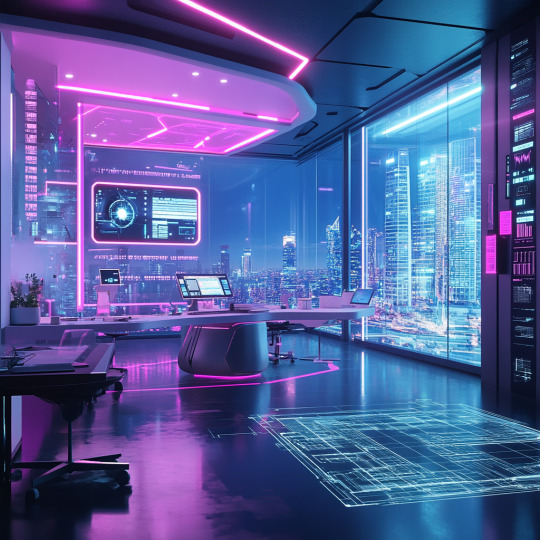
Technology is revolutionizing every industry, and architecture is no exception. From manually drafting blueprints to using advanced 3D modeling software, the architectural world has always embraced innovation. But now, we’re on the cusp of a monumental shift driven by immersive technologies like Augmented Reality (AR) and Virtual Reality (VR). These tools are transforming how architects design, collaborate, and communicate their ideas.
Whether you're an architect eager to explore cutting-edge tools, a design student curious about emerging trends, or a tech enthusiast fascinated by innovation, this blog will walk you through how AR and VR are shaping the future of architectural design. You’ll learn about their applications, benefits, and challenges, plus where the industry is headed next.
AR and VR in Architecture: A New Frontier
What Are AR and VR?
Before we explore their influence on architecture, it’s essential to understand what AR and VR are:
Augmented Reality (AR): AR overlays digital elements onto the real world, blending virtual visuals with physical spaces. Architects can use this technology to project 3D models over real landscapes, offering a seamless, interactive visual experience.
Virtual Reality (VR): VR, on the other hand, creates fully immersive virtual environments. Users can step into a designed space using VR headsets and explore it as if it already exists, all while it’s still in the conceptual stage.
Together, these tools are upending traditional processes and opening up new ways to design, visualize, and execute architectural projects.
Why AR & VR Are the Future of Architectural Design
Architectural design relies heavily on translating abstract concepts into tangible visualizations. While 2D drawings and even 3D software accomplish this to some degree, AR and VR take it to entirely new levels. They bring ideas to life with unprecedented detail, helping clients and architects see projects in ways they never could before. AR and VR are more than just fancy gadgets; they’re tools helping the industry address long-standing challenges like miscommunication, design inefficiencies, and project delays.
Fun Fact: Leading companies specializing in high-end architectural design in cities like Chennai are already leveraging immersive AR/VR tools for both interior design and construction planning.
Here's how AR and VR are revolutionizing architecture:
Enhanced visualization for immersive 3D experiences
Real-time design changes that reduce errors early
Virtual walkthroughs that engage clients interactively
Seamless remote collaboration among stakeholders
Let's break down these applications step by step.
How AR & VR Are Transforming Architectural Design
1. Enhanced Visualization
Imagine walking through a building when it’s still on the drawing board. That’s exactly what AR and VR allow. Using VR, designers can create immersive 3D environments where clients can "walk" through an unbuilt structure. AR enhances this by projecting digital renderings of buildings or rooms onto real-world settings.
Whether it’s choosing the best architecture design for a project in Chennai or visualizing how sunlight falls in a downtown skyscraper, these tools provide designers and clients with strikingly realistic previews.
2. Real-Time Design Modifications
With AR/VR tools, making changes is faster and error-free. Architects can instantly adjust designs during discussions with stakeholders. Need to scale down a balcony or try a new finish? Changes can be visualized in real-time, saving hours of back-and-forth.
3. Virtual Client Walkthroughs
One of the most significant advantages of VR is its ability to give clients an “as-built” experience. These walkthroughs are interactive and detailed, allowing clients to grasp designs in ways 2D and even 3D models can’t. Every doorframe, staircase, and lighting fixture can be explored, fostering confidence in the final project.
4. Improved Collaboration Across Teams
AR and VR make remote collaboration effortless. Team members across the globe can log into a shared virtual workspace, providing input and catching potential issues before construction begins. VR platforms also facilitate meetings where clients and designers can co-create, ensuring alignment between all involved parties.
Applications of AR & VR in Architecture
Beyond dramatic visuals and better teamwork, the practical applications of AR and VR are endless. Here are some key use cases:
Concept Design & Planning
Creating design concepts is no longer limited to sketches and blueprints. With AR/VR, architects can bring ideas to life, letting stakeholders visualize designs at every stage.
Interior & Exterior Visualization
From furniture placement to color palettes, AR tools enable instant visualization of interiors. On the exterior side, AR and VR can simulate material textures, lighting conditions, and landscaping choices.
Construction Simulation and Safety Training
VR designs aren’t just for architects. Construction teams can train on simulated environments, learning safety protocols and familiarizing themselves with complex projects before breaking ground.
Remote Site Inspections
Through AR-enabled livestreams or pre-recorded VR models, architects can conduct site inspections without traveling. This saves time and allows for rapid intervention if adjustments are needed.
Projects that incorporate AR/VR not only look stunning but also become more streamlined and efficient.
Benefits of Using AR & VR in Architectural Design
Why should more architectural firms and construction companies invest in AR and VR solutions? Here’s why:
Reduces Errors and Costs: By identifying flaws earlier, AR/VR prevents costly mistakes down the line.
Faster Project Approvals: Interactive previews expedite client approvals and reduce delays in decision-making.
Encourages Creativity: Architects can push boundaries by visualizing complex structures or experimenting with innovative designs.
Eco-Friendly Design Practices: AR and VR reduce the need for physical models and mockups, contributing to sustainability by cutting down on materials waste.
These advantages make AR and VR indispensable tools for modern architecture.
Challenges & Limitations of AR & VR in Architecture
Despite their promise, AR and VR come with hurdles that architects must be aware of:
High Initial Investment: Both the hardware (VR headsets, AR devices) and software can be costly, posing a challenge for smaller firms.
Learning Curve: Professionals must undergo technical training to make full use of these tools.
Compatibility Issues: Legacy tools may not integrate seamlessly with advanced AR/VR platforms.
Industry Adoption: Some stakeholders in construction are slow to adopt tech, preferring traditional methods.
Addressing these challenges requires thoughtful investment in training, hardware, and collaboration with industry partners.
What’s Next? The Future of AR & VR in Architectural Design
Looking forward, AR and VR will continue to evolve, integrating with other cutting-edge technologies like artificial intelligence (AI) and blockchain. Here are some trends to watch:
AI Integration: AI-driven AR/VR tools will automate routine tasks and offer predictive insights during the design process.
Metaverse Applications: The rise of the Metaverse will blur lines between architecture and the digital world, as firms design virtual cities and even fully digital real estate.
Holographic Technology: Mixed Reality (MR) and holograms represent the next step, combining physical and digital seamlessly.
As AR/VR tech becomes more accessible, wider adoption across architecture, interior design, and construction industries is inevitable.
Take the First Step Toward an AR/VR Future
AR and VR aren’t just trends; they’re transformational forces shaping the future of architectural design. By integrating these technologies now, architects can stay ahead of the curve, offering clients visuals and experiences that go beyond expectations.
If you’re an architect, design student, or tech enthusiast curious to explore AR and VR capabilities, start experimenting with small-scale projects. Mastering these tools can position you as a leader in this rapidly evolving area of architecture.
Have questions on integrating AR/VR into your practice? Share your thoughts in the comments or reach out to explore the possibilities!
0 notes